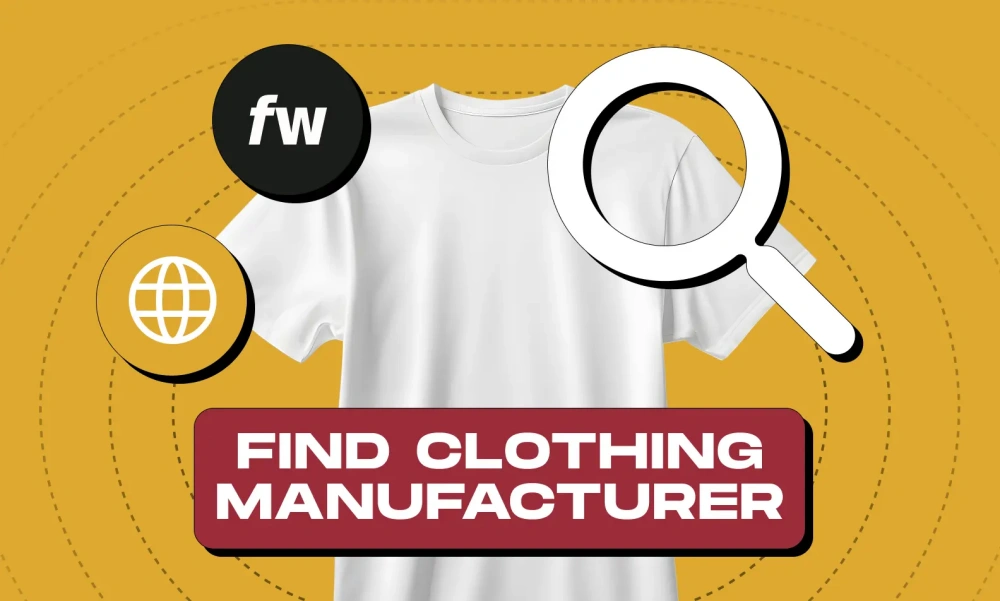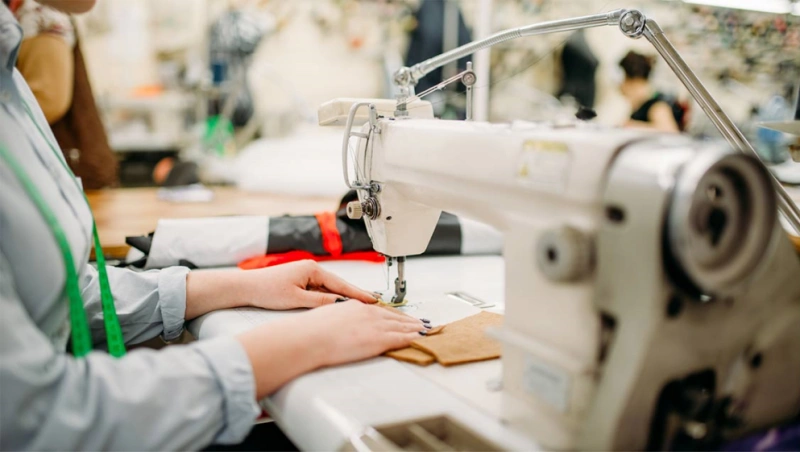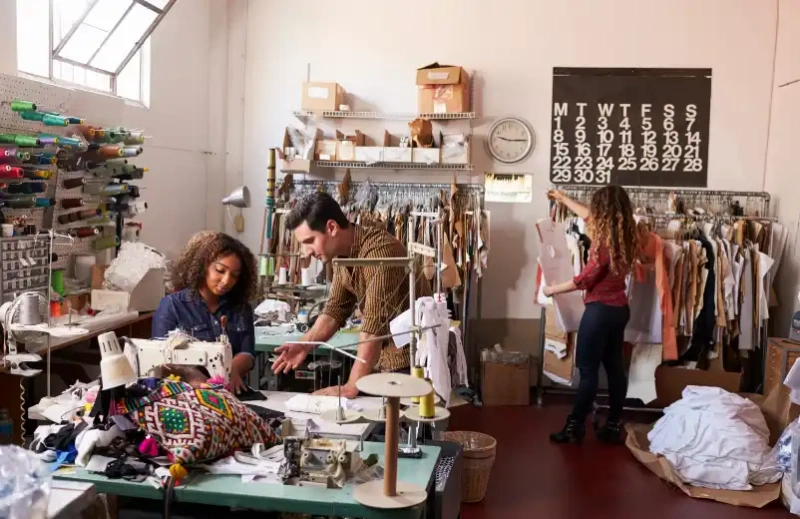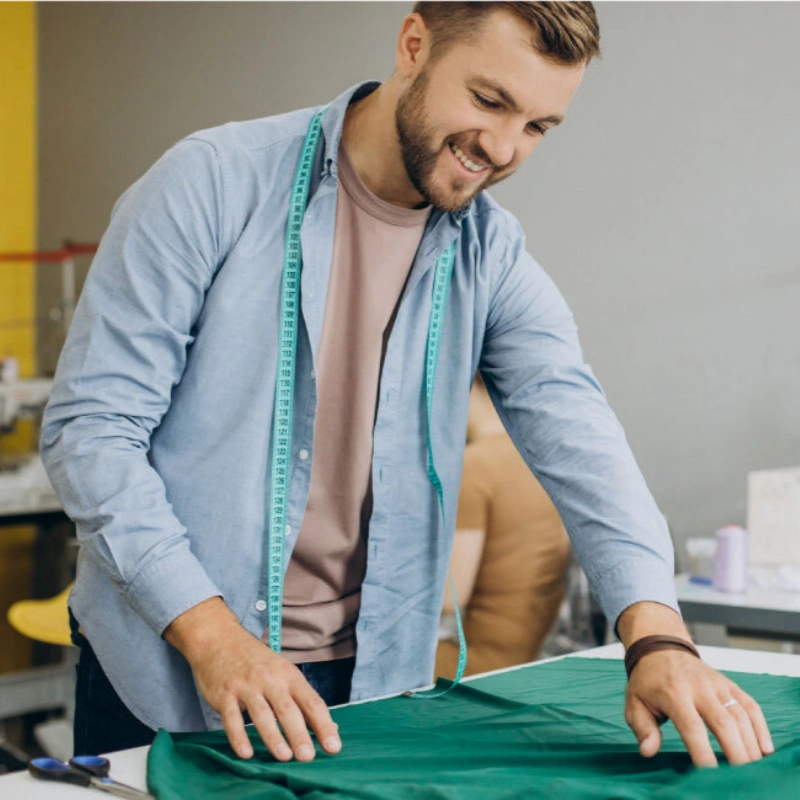If you’re wondering how to find a clothing manufacturer for quality production, begin by clearly defining your needs and what’s most important to your brand. Understanding how to find a clothing manufacturer means not skipping crucial steps like sending reference samples or clarifying what’s included in the price.
Don’t overlook quality control or expect perfection from the very first sample. You deserve a partner that prioritizes exceptional quality—just as Friendtex does for high-end brands.
Key Takeaways
Define your brand’s values, style, and budget before searching for a manufacturer to find the best fit.
Use online platforms, trade shows, and social media to discover and connect with reliable clothing manufacturers.
Check certifications and request samples to ensure the manufacturer meets your quality and ethical standards.
Choose manufacturers with clear, fast communication to avoid delays and build strong partnerships.
Consider local and overseas options carefully, balancing cost, lead time, and sustainability for your brand’s success.
Define Your Needs
Product and Brand Requirements
Before you start searching for a manufacturer, you need to get clear about what your brand stands for and what you want your clothing to say. Think about your brand’s values and the story you want your garments to tell.
Do you want your clothing to feel bold and modern, or soft and classic? Your brand’s personality should shine through every piece you create.
Define your brand values and purpose. This helps guide your product decisions and connects you with your customers.
Choose a brand personality and tone of voice. This builds trust and makes your brand easy to recognize.
Design a visual identity. Pick a logo, colors, and fonts that match your brand and attract your target market.
Create product designs that fit your brand story and what your customers want.
Start with a few well-designed hero products. You can always expand your line as your brand grows.
You also need to think about legal and ethical factors. Make sure your manufacturer follows local and international clothing manufacturing rules. This includes safety laws for children’s garments and chemical regulations.
Look for manufacturers who care about transparency, worker welfare, and sustainability. Certifications like GOTS or Oeko-Tex show that custom clothing manufacturers take these things seriously.
Tip: Choosing manufacturers with strong ethical and environmental standards helps your brand stand out and builds trust with your customers.
Budget and Order Size
Your budget and order size will shape which manufacturers you can work with. Some custom clothing manufacturers accept small orders, while others require you to order hundreds or even thousands of garments at once.
The complexity of your clothing, the fabrics you choose, and any special features will all affect the minimum order quantity (MOQ).
Simple garments like tote bags may have MOQs as low as 30 units.
More complex items, such as trousers or detailed dresses, usually require MOQs of 100 units or more.
Larger manufacturers often set MOQs at 1,000 units or higher, while smaller manufacturers may be more flexible.
Here’s a quick look at average costs for small and medium production runs:
Production Scale | Quantity Range | T-Shirt Cost (per unit) | Dress Cost (per unit) |
|---|---|---|---|
Small Batch | 10-100 units | $15 – $30 | $50 – $200 |
Medium Batch | 100-500 units | $10 – $20 | $30 – $150 |
You’ll also need to budget for fabric, materials, branding, and other expenses. For a small to mid-size clothing line, you might spend between $15,000 and $50,000 to cover everything from production to marketing.
When you know your needs and limits, you can find manufacturers who fit your vision and help you launch your clothing line with confidence.
How to Find a Clothing Manufacturer?

Finding the right partner for your clothing line can feel overwhelming, but you have more tools than ever before. If you want to know how to find a clothing manufacturer for quality production, you need to use a mix of online research, in-person events, and networking.
Let’s break down the best ways to connect with reliable manufacturers and make your sourcing journey smoother.
Online Directories and Platforms
Online directories and platforms are some of the fastest ways to start your search for clothing manufacturers. These websites let you browse thousands of manufacturers from around the world, compare their services, and read reviews from other brands. Here are some of the most popular platforms you can use:
Alibaba: This global B2B marketplace connects you with clothing manufacturers for almost any type of product. You can filter by country, minimum order quantity, and certifications. Many brands use Alibaba for scalable and budget-friendly production.
Maker’s Row: If you want to work with U.S.-based manufacturers, Maker’s Row is a great place to start. It’s popular with startups and small businesses looking for American factories that offer prototyping and full-package production.
Sewport: This platform matches you with manufacturers based on your project details. You can post your requirements and get quotes from different factories.
Suplify: Suplify helps you find and compare manufacturers, making it easier to manage your sourcing process.
ThomasNet: Focuses on U.S. suppliers, including apparel manufacturers with strong reputations and clear timelines.
When you use these platforms, always check the manufacturer’s profile for details like certifications, years in business, and sample photos. Read reviews and testimonials to see how other brands rate their experience.
Friendtex, for example, stands out as a trusted option for high-end brands that want premium quality and innovative design. You can visit Friendtex’s official website to see their full range of services and certifications.
Tip: Use specific keywords when searching online directories. For example, if you want eco-friendly pajamas, try searching “organic cotton sleepwear manufacturer” instead of just “clothing manufacturers.” This helps you find factories that match your exact needs.
Here’s a quick table to help you compare some top platforms:
Platform | Region Focus | Best For | Key Features |
|---|---|---|---|
Alibaba | Global | Large-scale, budget production | Verified suppliers, reviews |
Maker’s Row | USA | Startups, small brands | U.S. factories, prototyping |
Sewport | Global | Custom projects, easy matching | Project posting, quotes |
Suplify | Global | Sourcing management | Compare manufacturers |
ThomasNet | USA | Certified U.S. suppliers | Certifications, timelines |
Trade Shows and Networking
Trade shows are one of the most effective ways to meet clothing manufacturers face-to-face. These events bring together hundreds or even thousands of manufacturers, suppliers, and brands under one roof.
You get to see product samples, ask questions, and build relationships in person. This direct contact helps you judge the quality of the clothing and the professionalism of the manufacturer.
Some of the most reputable trade shows for sourcing clothing manufacturers include:
MAGIC (Las Vegas, New York, Nashville): One of the largest fashion trade fairs, covering everything from apparel to accessories.
Première Vision Paris: A top event for textiles, fabrics, and manufacturing, with a focus on innovation and quality.
Texworld USA: Great for meeting fabric and apparel manufacturers from around the world.
COTERIE (New York): Known for contemporary women’s fashion and accessories.
Pure London (Birmingham): A leading European show for apparel and lifestyle products.
When you attend these events, you can compare different manufacturers side by side. You also get to see the latest trends and innovations in clothing manufacturing. Many brands use trade shows to find new partners, get feedback on their designs, and expand their sourcing network.
Note: Bring samples of your designs and a list of questions to trade shows. This helps you make the most of your time and find manufacturers who truly understand your vision.
Social Media and Forums
Social media and industry forums have become powerful tools for finding reliable clothing manufacturers. Platforms like LinkedIn, Facebook groups, and Reddit forums let you connect with other fashion entrepreneurs, share experiences, and get honest feedback about different manufacturers.
LinkedIn: Join groups focused on clothing manufacturing or use hashtags like #clothingmanufacturer to find posts and recommendations. Many manufacturers, including Friendtex, share updates and respond to inquiries here.
Facebook Groups: Groups like “Shopify Apparel Entrepreneurs” offer real stories and reviews about manufacturers. You can ask for referrals or warnings about factories to avoid.
Reddit: Subreddits like r/fashionbiz provide open discussions about sourcing, production issues, and trusted manufacturers.
Instagram: Search for manufacturers using hashtags related to your niche, such as #sustainablefashionmanufacturer or #customsleepwear.
Industry forums and social media pages often feature customer comments and reviews. These give you a real sense of how manufacturers treat their clients and handle problems. You can also use these platforms to ask for referrals, which often lead to manufacturers with proven track records.
Tip: When searching online, use long-tail keywords that describe your product in detail. For example, “women’s bamboo pajamas manufacturer” will give you more targeted results than just “clothing manufacturers.”
If you want to know how to find a clothing manufacturer that matches your brand’s values, don’t be afraid to reach out and start conversations. Leverage your industry connections and always check for certifications, sample quality, and clear communication.
Friendtex is a great example of a manufacturer that values transparency, sustainability, and high-quality production—making them a top choice for brands that want to stand out.
Vetting Clothing Manufacturers

Finding the right manufacturers is only half the journey. You also need to make sure they can deliver high-quality products that match your brand’s standards. Let’s walk through how you can vet clothing manufacturers and build a partnership that sets your business up for success.
Quality Checks and Certifications
You want your clothing to stand out for its quality and safety. The best way to check if a manufacturer meets these standards is by looking at their certifications. These certifications show that manufacturers follow strict rules for quality, safety, and ethical production.
Here’s a table to help you understand some of the most important certifications you should look for:
Certification | Focus Area | Description and Benefits |
|---|---|---|
ISO 9001:2015 | Quality Management | Ensures consistent quality standards and customer satisfaction. |
OEKO-TEX Standard 100 | Material Safety | Guarantees textiles are free from harmful substances. |
GOTS | Organic Textile Standard | Confirms organic status and environmentally friendly production. |
SA8000 | Social Accountability | Protects workers’ rights and promotes ethical business models. |
WRAP | Ethical Manufacturing | Covers lawful, humane, and ethical production practices. |
Fair Trade Certification | Fair Wages and Safe Conditions | Supports fair pay and safe workplaces. |
B Corp | Social & Environmental Performance | Recognizes companies balancing profit with positive impact. |
Better Cotton Initiative | Sustainable Cotton Production | Promotes better standards in cotton farming. |
When you see these certifications, you know the manufacturer takes quality and responsibility seriously. Friendtex, for example, holds certifications like GOTS, OEKO-TEX, SEDEX, BSCI, and Better Cotton Initiative. This means you can trust them to deliver high-quality products while caring for people and the planet.
You should also ask about third-party audits. These audits help make sure manufacturers keep up with their promises. Most companies with regular audits report better compliance and fewer problems down the line.
Tip: Always check that certifications are up to date. Expired certificates can put your brand at risk.
Requesting Samples
Before you commit to a large order, always ask for samples. Samples let you see and feel the clothing for yourself. You can check the stitching, fabric, fit, and overall quality. This step helps you spot any issues early and avoid surprises later.
Common problems you might find in samples include:
Shoulder seams that don’t match, making the garment look uneven
Collars with different depths or shapes
Labels sewn off-center
Untrimmed threads (not always a big deal, but watch for loose stitching)
Uneven hems or raw edges not caught in the stitching
You should also look for:
Stitching defects like skipped stitches, loose threads, or puckering
Fabric flaws, such as color fading or pilling
Incorrect sizing or fit issues
Deviations from your tech pack or design specs
Testing samples is a smart move. You can do strength tests, colorfastness tests, and shrinkage tests. Some brands even send samples to third-party labs for extra peace of mind. If you want to be extra careful, visit the factory or set up a video call to see how they make the garments.
Friendtex welcomes these checks and uses advanced technology to keep quality high.
Note: If a manufacturer refuses to send samples or delays the process, that’s a red flag. Good manufacturers want you to feel confident in their work.
Communication and Responsiveness
Clear and quick communication is key to a smooth production process. You want a manufacturer who answers your questions, gives updates, and solves problems fast. This helps you avoid mistakes, delays, and misunderstandings.
Here are some ways to keep communication strong:
Set up a dedicated point of contact on both sides.
Schedule regular updates and meetings to talk about progress.
Use tools like email for detailed discussions and WhatsApp for quick messages.
Share files and designs using Google Drive or Dropbox.
Try video calls for real-time conversations and factory tours.
Use project management platforms like ClickUp to track tasks and deadlines.
When you work with manufacturers who respond quickly and clearly, you build trust. You also get better results and fewer headaches. Friendtex, for example, uses real-time tracking tools and keeps you updated at every step. This makes it easy to monitor your order and make changes if needed.
Tip: Good communication leads to long-term partnerships. You get better pricing, priority production, and a reliable source for high-quality products.
Domestic vs Overseas Options
US and Local Manufacturers
When you choose a US or local manufacturer, you get some big advantages. You can talk to your team easily because you share the same language and time zone. This makes it simple to solve problems and keep your project on track.
You also get faster turnaround times, so your clothing reaches the market quickly. Local manufacturers often have lower minimum order quantities, which helps if you want to start small or test new designs.
Here are some benefits and drawbacks to consider:
Advantages:
Quick delivery and shorter lead times
Easier communication and fewer misunderstandings
Stronger quality control and easier factory visits
Better protection for your designs and ideas
Support for your local economy
Disadvantages:
Higher costs for labor and materials
Fewer choices in fabrics and special techniques
Smaller production capacity
You might also notice that “Made in the USA” labels can boost your brand’s image. Many customers like to support local businesses and value ethical production.
China and Global Choices
If you look overseas, especially in China, you find a huge range of manufacturers. These factories can handle large orders and offer lower prices.
You get access to many types of fabrics and advanced technology. This is why many big brands choose global partners for their clothing lines.
But you should watch out for some risks:
Rising labor costs in China and other countries
Trade tensions and tariffs can change prices
Supply chain disruptions, like those seen during the COVID-19 pandemic
Quality control challenges that need extra checks
Language barriers and time zone differences
Issues with protecting your designs
Many brands now use a mix of suppliers to avoid problems. This helps you stay flexible if something changes in one country.
Here’s a quick comparison:
Factor | US-Based Manufacturers | Overseas Manufacturers |
|---|---|---|
Lead Time | Shorter, faster delivery | Longer, more shipping steps |
Shipping Costs | Lower, no import duties | Higher, may include tariffs |
Labor Costs | Higher | Lower |
Order Size | Smaller batches possible | Larger orders preferred |
Sustainability and Certifications
Sustainability matters more than ever in the clothing industry. When you pick a manufacturer, look for certifications that show they care about the planet and people. Certifications like GOTS, OEKO-TEX, and Fairtrade prove that a manufacturer uses safe materials, treats workers fairly, and follows eco-friendly practices.
These certifications help you:
Trust that your garments meet high standards for safety and ethics.
Show your customers that you care about the environment.
Avoid greenwashing because third-party audits check the facts.
Make better choices by comparing manufacturers on their sustainability efforts.
Manufacturers like Friendtex lead the way by holding multiple certifications and using sustainable fabrics. When you choose a partner with these values, you help protect the planet and build a brand your customers can trust.
Find the Best Clothing Manufacturers for Startups

Comparing Quotes and Capabilities
When you want to find the best clothing manufacturers for startups, you need to look beyond just the price. Start by making a list of what matters most to your startup. Here’s a simple way to compare your options:
Check the quality of samples. Look at stitching, fabric, and fit. High-quality products help your brand stand out.
Review minimum order quantities (MOQs). Some manufacturers, like Friendtex, offer low MOQs—even as low as 3 pieces—so you can test new ideas without a big risk.
Ask about customization. Can you choose fabrics, colors, prints, and labels? Friendtex lets you customize almost every detail, which is perfect for building a unique brand.
Compare lead times. Fast sample delivery (like 7-10 days from Friendtex) helps you launch quickly.
Look at certifications. Certifications such as GOTS and SEDEX show a commitment to sustainability and ethical practices.
Evaluate communication. You want a manufacturer who responds quickly and clearly.
Understand all costs. Make sure you know what’s included in each quote, from materials to shipping.
Here’s a quick table to help you compare:
Factor | Friendtex | Typical Manufacturer |
|---|---|---|
MOQ | 3-50 pieces | 100+ pieces |
Customization | Full | Limited |
Sample Lead Time | 7-10 days | 14+ days |
Certifications | GOTS, SEDEX, etc | Varies |
Communication | Responsive | Varies |
Building Partnerships
A strong partnership with your manufacturer can make your startup journey much smoother. You should set clear expectations from the start. Share your designs, timelines, and quality standards. Use tools like tech packs or even 3D prototypes to show exactly what you want.
Stay in touch with your manufacturer. Schedule regular updates and use cloud-based tools to keep everyone on the same page. Friendtex, for example, guides you through every step and offers expert advice, making the process less stressful.
Trust and transparency matter. When you work with a manufacturer that values open communication, you avoid surprises and build a long-term relationship. This helps you grow your brand and keep your customers happy.
Tip: The best manufacturers for your startup will support your growth, offer flexibility, and help you create high-quality clothing that matches your vision.
Conclusion
Finding the right clothing manufacturer takes research, careful vetting, and building a strong partnership. Focus on these essentials:
Look for manufacturers with consistent textile testing, ethical certifications, and sustainable material options.
Check their experience with brands like yours and review their track record.
Use online platforms to compare portfolios and client feedback.
Ready to take action?
Reach out to trusted manufacturers such as Friendtex.
Ask about samples, minimum order quantities, and quality control.
Review certifications and visit factories if possible.
Taking these steps helps you launch a clothing line that stands out for its quality and values.
FAQ
How do I know if a clothing manufacturer is reliable?
You can check reviews, ask for references, and look at their certifications. Request samples to see their quality. Reliable manufacturers, like Friendtex, communicate clearly and deliver on time.
What is a tech pack, and do I need one?
A tech pack is a document with your design details, measurements, and materials. You need one to make sure the manufacturer understands your vision. It helps avoid mistakes and keeps everyone on the same page.
Can I order small quantities when starting?
Yes, some manufacturers offer low minimum order quantities (MOQs). Friendtex, for example, lets you start with as few as 3 pieces. This helps you test your designs without a big investment.
How long does it take to get samples made?
Sample production usually takes 7 to 14 days. Friendtex can deliver samples in about 7-10 days. Always ask your manufacturer for a timeline before you start.


